DIY Decor: Turning Yarn into Wall Art
Are you ready to unleash your inner artist and transform your living space with some stunning DIY decor? Turning yarn into wall art is not only a fun and creative project, but it also allows you to add a personal touch to your home. Imagine walking into a room adorned with vibrant colors, intricate patterns, and textures that you crafted yourself! This article will guide you through various techniques, styles, and tips to help you create unique pieces that reflect your personality and style.
What makes yarn wall art so appealing is its versatility. Whether you're a seasoned crafter or just starting, there are countless ways to experiment with yarn. You can create everything from simple designs to complex patterns that will leave your guests in awe. Plus, it’s a fantastic way to recycle leftover yarn from previous projects or use up those odd skeins you’ve had lying around. So, grab your favorite yarn and let’s dive into the world of DIY decor!
Selecting the appropriate yarn is crucial for your wall art project. The right yarn can make a significant difference in the overall aesthetic and durability of your artwork. Start by considering factors like color, texture, and weight. For instance, if you want a soft and cozy feel, opt for cotton or wool yarns. On the other hand, if you’re looking for something more durable and vibrant, acrylic yarn might be your best bet. Here’s a quick breakdown:
| Type of Yarn | Texture | Durability | Best Use |
|---|---|---|---|
| Cotton | Soft, breathable | High | Floral designs |
| Wool | Warm, fuzzy | Medium | Textured patterns |
| Acrylic | Vibrant, lightweight | High | Colorful art pieces |
Once you’ve chosen your yarn, think about how the colors will interact with each other. This brings us to our next point: color combinations. The right mix of shades can elevate your wall art from basic to breathtaking.
Before diving into your project, it’s essential to gather the right tools and materials. Having everything on hand will streamline your crafting process and keep you focused on creating. Here’s a list of what you’ll need:
- Yarn: Choose your preferred types and colors.
- Scissors: A good pair of fabric scissors will make cutting yarn easy.
- Glue: Fabric glue or a hot glue gun for securing your designs.
- Wooden dowels or frames: These will serve as the base for your wall art.
- Measuring tape: For precise measurements when planning your designs.
With your materials ready, you’re set to explore the basic techniques for creating yarn wall art. Whether you prefer knotting, weaving, or wrapping, each method has its unique charm and can be combined to produce stunning results.
Learning fundamental techniques for creating yarn wall art is essential for any DIY enthusiast. Knotting is one of the most versatile methods, allowing you to add texture and depth to your designs. From simple knots to intricate macramé, the possibilities are endless! For example, a basic square knot can create stunning patterns when repeated, while a lark’s head knot can be used to attach yarn to your base.
Weaving is another technique that opens up a world of intricate designs and patterns. By interlacing yarn in various ways, you can achieve complex textures that will captivate anyone who sees your work. Don't be afraid to experiment with different weaving styles to find what resonates with your artistic vision.
Now that you have the basics down, it’s time to unleash your creativity! Here are some unique design ideas to inspire your yarn wall art:
Geometric designs are in vogue and can add a modern touch to your decor. By using straight lines and bold colors, you can create striking patterns that are both eye-catching and sophisticated. Think of it as painting with yarn, where each piece contributes to a larger, cohesive design!
If you prefer a more serene approach, consider nature-inspired designs. Incorporating floral motifs, landscapes, or even abstract representations of natural elements can bring a sense of tranquility to your space. Imagine a vibrant sunset crafted from yarn, or a delicate flower that seems to bloom right off your wall!
Q: Can I use any type of yarn for wall art?
A: While you can use various yarn types, consider their texture and durability. Cotton and acrylic are popular choices for their vibrant colors and ease of use.
Q: Do I need special tools for creating yarn wall art?
A: Basic crafting tools like scissors, glue, and a base (like a wooden dowel or frame) are sufficient for most projects.
Q: How do I hang my yarn wall art?
A: You can use nails, adhesive hooks, or even a simple dowel system to hang your creations securely.
With these tips and techniques, you are well on your way to creating stunning yarn wall art that will not only beautify your space but also serve as a testament to your creativity. Happy crafting!
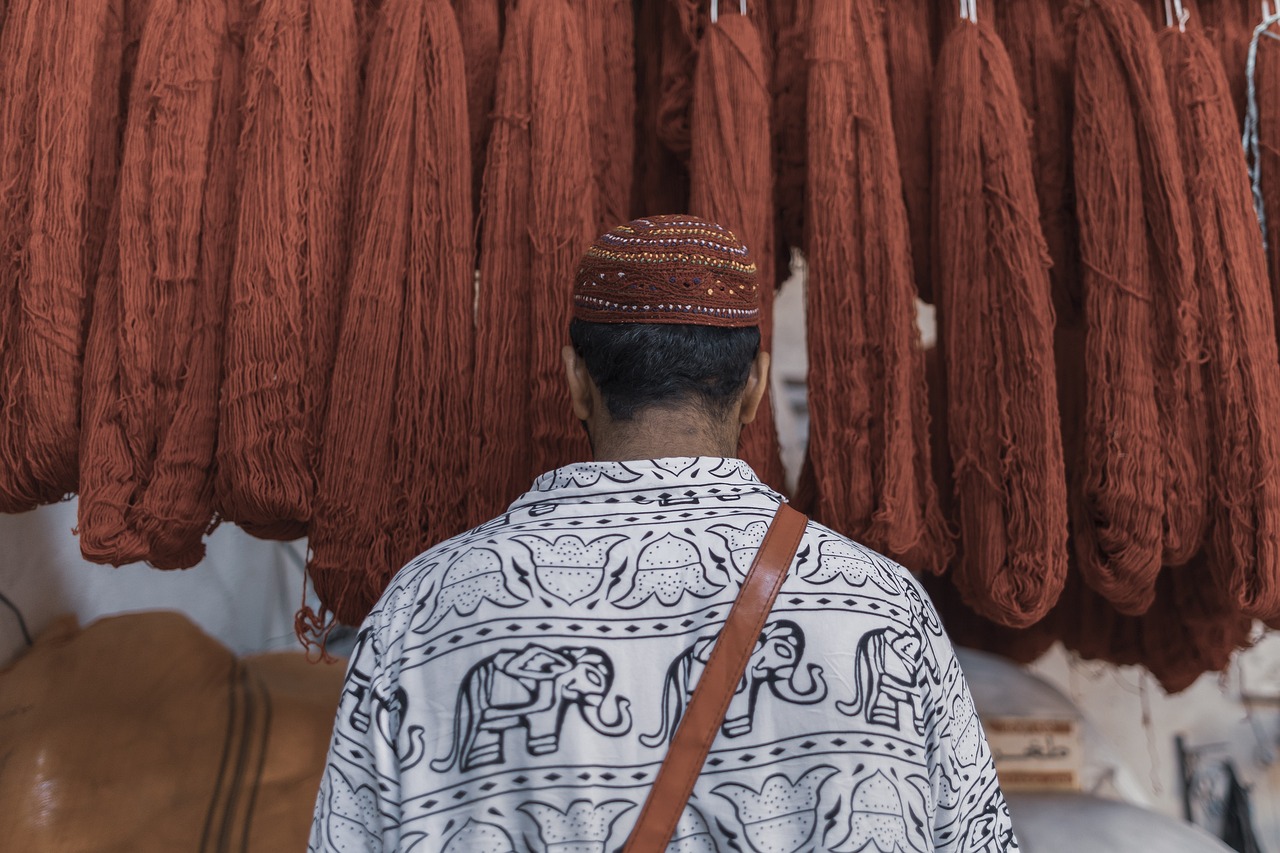
Choosing the Right Yarn
When it comes to creating your own stunning wall art, is absolutely essential. Think of yarn as the paint on a canvas; it sets the tone and character of your entire piece. So, how do you select the perfect yarn for your project? First and foremost, consider the color. The color of your yarn can evoke emotions and create a certain atmosphere in your space. Do you want a calming vibe? Opt for soft blues and greens. Looking to inject some energy into your room? Bright yellows and reds could do the trick!
Next, let's talk about texture. The feel of the yarn can add depth and interest to your wall art. For example, a fluffy yarn can create a cozy, inviting look, while a sleek, smooth yarn might lend a more modern touch. You can even mix textures to create a more dynamic piece! And don't forget about weight. Lighter yarns are great for delicate designs, while heavier yarns can make a bold statement. Think about the overall aesthetic you want to achieve and choose accordingly.
To help you in this journey of yarn selection, we've compiled a quick comparison of some popular yarn types:
| Yarn Type | Texture | Best For |
|---|---|---|
| Cotton | Smooth and soft | Bright, vibrant wall art |
| Wool | Warm and fluffy | Cozy, textured pieces |
| Acrylic | Varied, can be soft or rough | Budget-friendly options |
Now that you have a clearer idea of what to look for, you might find yourself wondering about color combinations. Mixing and matching colors can be intimidating, but it doesn't have to be! A simple rule of thumb is to use the color wheel. Complementary colors—those that are opposite each other on the wheel—tend to look great together. For example, pairing a vibrant orange with a deep blue can create a striking visual contrast that’s hard to ignore. Don't be afraid to experiment! Sometimes the most unexpected combinations yield the most stunning results.
In conclusion, choosing the right yarn is a fundamental step in your DIY wall art journey. By considering color, texture, and weight, you can select materials that not only enhance your design but also reflect your personal style. So, gather your yarn, let your creativity flow, and get ready to transform your space with your unique creations!
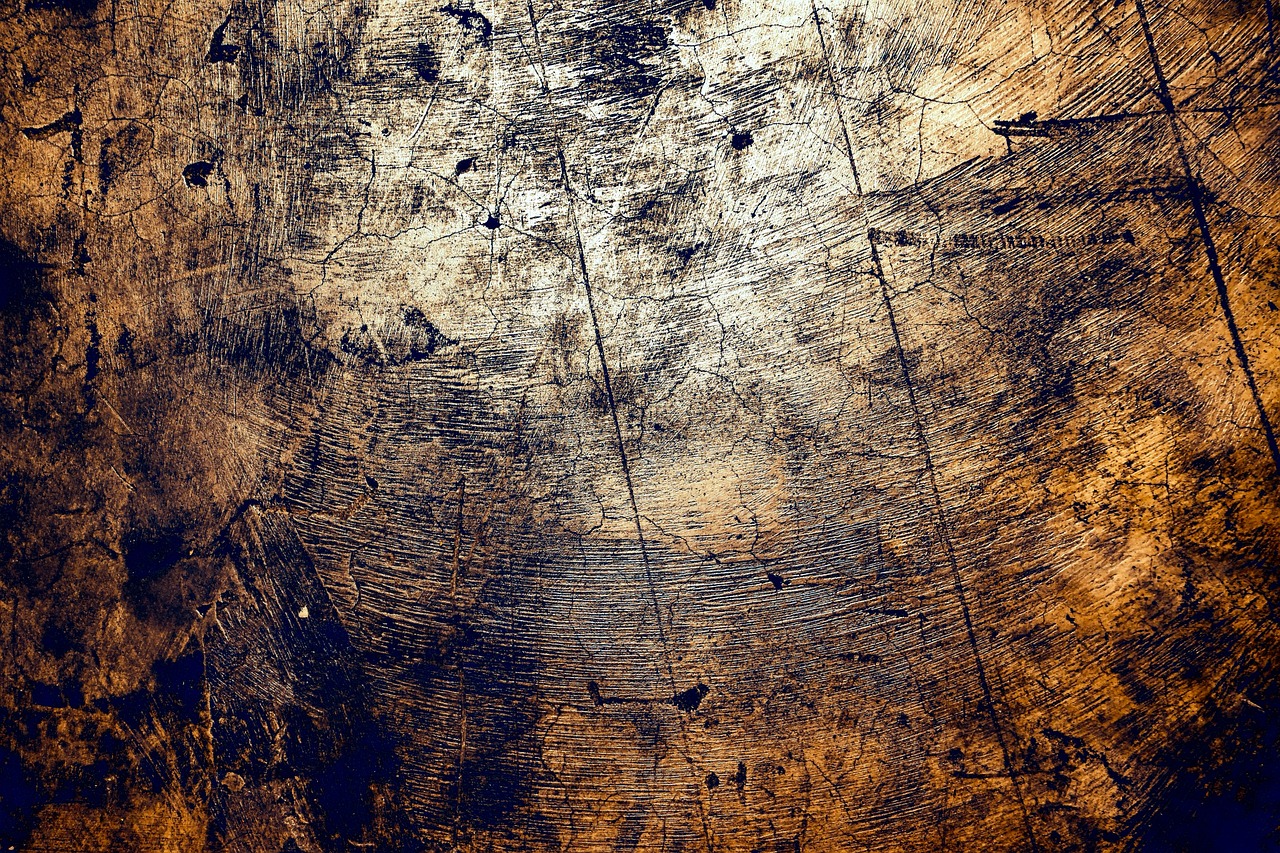
Essential Tools and Materials
When diving into the world of DIY yarn wall art, having the right tools and materials is like having a well-stocked toolbox for any project. It sets the stage for creativity and ensures that your artistic vision comes to life seamlessly. First and foremost, you'll need a variety of yarn types. Different yarns possess unique characteristics that can significantly influence the overall look and feel of your wall art. For instance, cotton yarn is soft and easy to work with, making it perfect for beginners, while wool yarn provides warmth and texture, ideal for more intricate designs. Acrylic yarn is also a popular choice due to its affordability and vibrant color options.
Next, let’s talk about crafting tools. Having the right tools can make your crafting experience smoother and more enjoyable. Here’s a quick rundown of essential tools you should consider:
- Scissors: A good pair of sharp scissors is essential for cutting yarn cleanly.
- Yarn Needle: This needle will help you weave in ends and attach pieces together seamlessly.
- Measuring Tape: Precision is key, so measuring your yarn lengths can help maintain consistency.
- Glue Gun: For added stability, especially when layering, a glue gun can be a lifesaver.
- Wooden Frame or Canvas: This will serve as the base for your wall art, providing structure and support.
Furthermore, don’t forget about the workspace. A clean and organized area can significantly enhance your crafting experience. Make sure you have a sturdy table, good lighting, and all your materials within reach. This not only keeps you focused but also sparks creativity as you experiment with different techniques and designs.
Lastly, consider your color palette. Choosing the right colors can elevate your wall art from ordinary to extraordinary. Spend some time thinking about the mood you want to create in the space. Do you want it to feel warm and inviting, or cool and calming? Gather your yarn in colors that resonate with your vision. Create a small swatch to see how they look together before you start your project!
In summary, the essential tools and materials for your yarn wall art project include a variety of yarn types, crafting tools like scissors and glue guns, a clean workspace, and a carefully chosen color palette. With these elements in place, you're ready to unleash your creativity and transform simple yarn into stunning wall art that reflects your personal style!
Q: What type of yarn is best for wall art?
A: The best type of yarn depends on your project. Cotton is great for beginners, wool adds texture, and acrylic offers vibrant colors.
Q: How do I choose a color palette?
A: Consider the mood you want to create. Use color theory to find complementary shades that work well together.
Q: Do I need a lot of tools to start?
A: Not at all! You can start with just a few basic tools like scissors and a yarn needle.
Q: Can I use other materials with yarn?
A: Absolutely! Incorporating materials like fabric, beads, or even natural elements can enhance your designs.
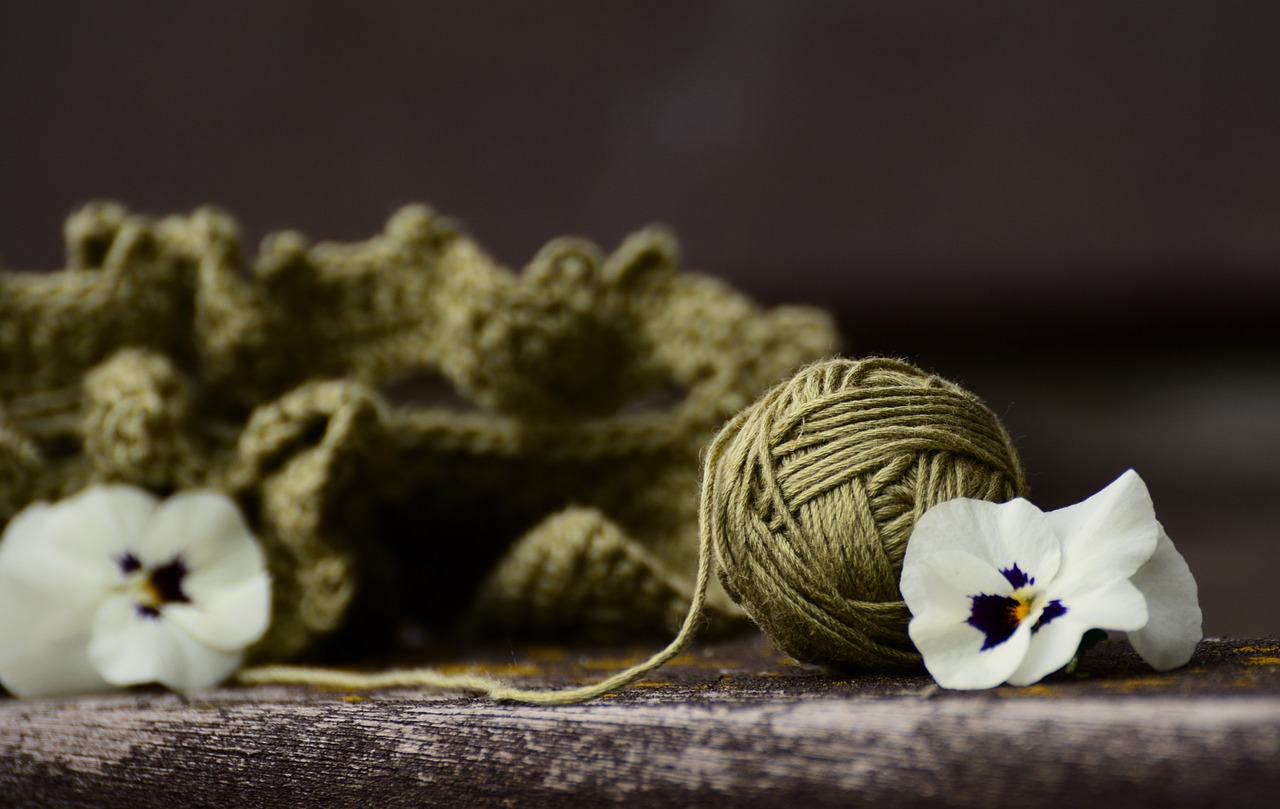
Types of Yarn
When it comes to creating stunning wall art, the type of yarn you choose can make all the difference. Each type of yarn has its own unique characteristics, which can significantly influence the final look and feel of your creation. Let's dive into the most popular types of yarn that you can use for your DIY projects, ensuring you select the perfect one for your artistic vision.
Cotton yarn is a fantastic choice for those seeking a soft, breathable texture. It’s perfect for intricate designs, as it holds its shape well and comes in a variety of vibrant colors. Cotton yarn is also easy to work with, making it ideal for beginners. Plus, its durability ensures that your wall art will last for years to come.
On the other hand, wool yarn offers a warm, cozy feel that can add a touch of elegance to your decor. Wool is known for its elasticity, which means it can stretch without losing its shape. This makes it an excellent option for designs that require a bit more flexibility. Additionally, wool yarn often comes in rich, deep colors, enhancing the overall aesthetic of your wall art.
If you're looking for something more budget-friendly, acrylic yarn is your go-to option. It’s lightweight, easy to care for, and comes in a vast array of colors and textures. Acrylic yarn is also resistant to moths and mildew, which makes it a practical choice for wall art that might be exposed to the elements. However, it’s worth noting that while acrylic is durable, it may not have the same luxurious feel as cotton or wool.
For those who want to explore beyond the basics, consider blended yarns, which combine different fibers to create unique textures and properties. For example, a cotton-wool blend can offer the softness of cotton while retaining the warmth of wool. This versatility allows you to experiment with various combinations to achieve your desired effect.
To make your decision easier, here’s a quick comparison table of the yarn types mentioned above:
| Type of Yarn | Texture | Durability | Best For |
|---|---|---|---|
| Cotton | Soft, breathable | High | Intricate designs |
| Wool | Warm, elastic | High | Flexible designs |
| Acrylic | Lightweight, versatile | Medium | Budget-friendly projects |
| Blended | Varies | Varies | Unique textures |
Ultimately, the choice of yarn can transform your wall art from simple to spectacular. Whether you opt for the softness of cotton, the warmth of wool, the affordability of acrylic, or the versatility of blended yarns, each has something special to offer. So, which type of yarn will you choose for your next masterpiece?
- What type of yarn is best for beginners? Cotton yarn is often recommended for beginners due to its ease of use and availability in various colors.
- Can I mix different types of yarn in one project? Yes! Mixing yarn types can create interesting textures and effects, just be mindful of their different properties.
- How do I care for my yarn wall art? Most yarn wall art can be spot cleaned or gently washed by hand, but always check the care instructions for your specific yarn.
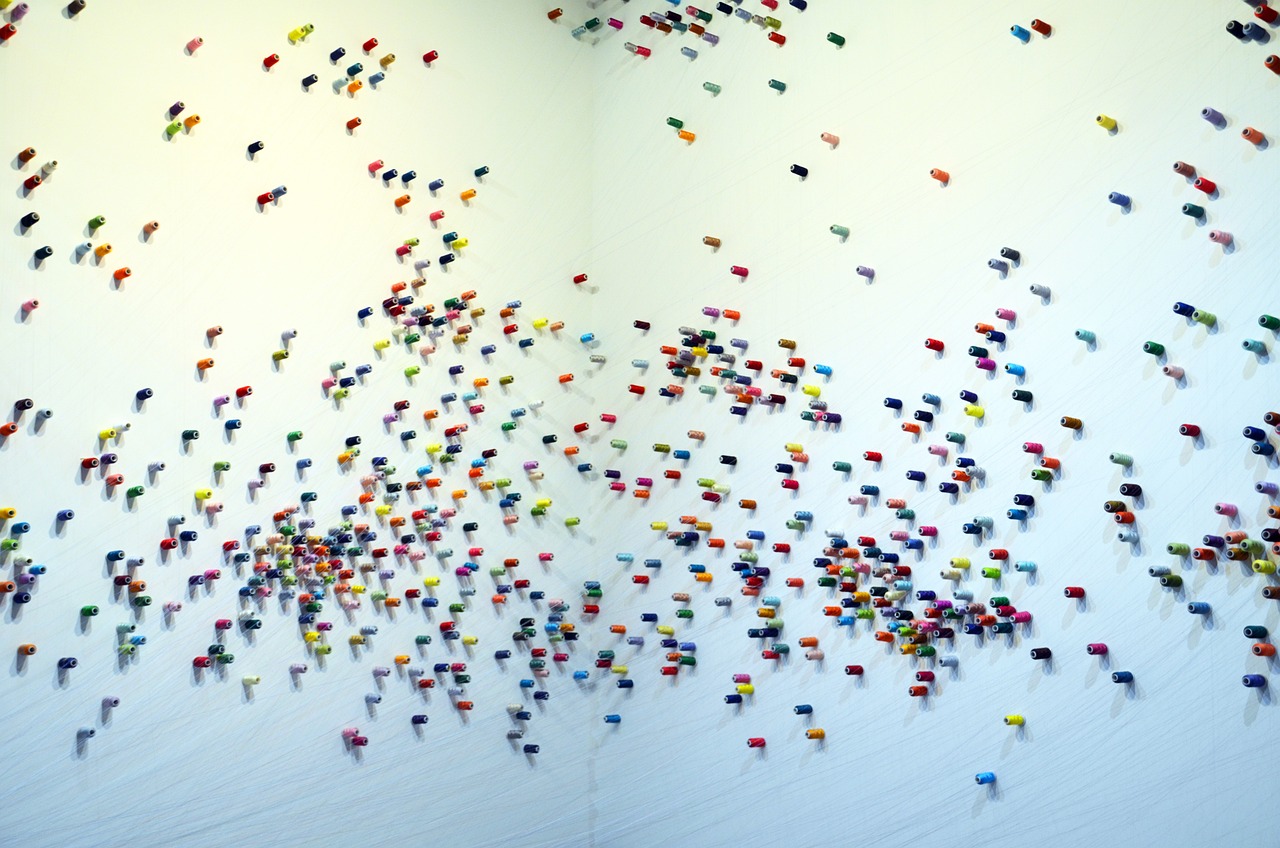
Color Combinations
When it comes to creating stunning yarn wall art, play a pivotal role in setting the mood and enhancing the overall aesthetic of your piece. Choosing the right colors can transform a simple design into a captivating work of art that draws the eye and sparks conversation. So, how do you go about selecting these colors? First, consider the emotional impact of colors. For instance, warm tones like reds and yellows can evoke feelings of energy and warmth, while cool tones such as blues and greens often bring a sense of calm and tranquility.
Understanding color theory can greatly assist you in making these choices. A great starting point is to familiarize yourself with the color wheel, which illustrates how colors relate to one another. Here are some fundamental concepts to keep in mind:
- Complementary Colors: These are colors that are opposite each other on the color wheel. For example, pairing blue with orange can create a striking contrast that makes your art pop.
- Analogous Colors: These are colors that sit next to each other on the wheel, such as blue, blue-green, and green. Using analogous colors can create a serene and harmonious look.
- Monochromatic Schemes: This involves using variations of a single color. It can add depth and sophistication to your wall art, especially when you play with different shades and tints.
To help you visualize these combinations, here’s a simple table that outlines some popular color pairings:
| Color Scheme | Example Colors | Emotional Impact |
|---|---|---|
| Complementary | Blue & Orange | Dynamic and Energetic |
| Analogous | Blue, Blue-Green, Green | Calm and Harmonious |
| Monochromatic | Light Blue, Blue, Dark Blue | Elegant and Cohesive |
Once you have a grasp on these concepts, it’s time to experiment! Don’t be afraid to play around with different combinations until you find the perfect blend that resonates with your personal style. Remember, art is subjective, and what matters most is that you create something that you love and that reflects your personality. If you’re feeling adventurous, try incorporating unexpected colors into your palette. Sometimes, the best designs come from breaking the rules and letting your creativity flow freely.
In conclusion, mastering color combinations is essential for crafting beautiful yarn wall art. By understanding color theory, experimenting with different palettes, and trusting your instincts, you can create pieces that not only beautify your space but also tell a story. So grab your yarn, let your imagination run wild, and start creating!
Q1: How do I choose the right colors for my yarn wall art?
A: Consider the emotional impact of colors, use the color wheel to explore complementary and analogous colors, and don’t hesitate to experiment with different combinations until you find what feels right for you.
Q2: Can I use more than three colors in my yarn art?
A: Absolutely! While it's often best to stick to a limited color palette for cohesion, using multiple colors can add vibrancy and interest. Just ensure that they work well together.
Q3: What if I’m not good at color matching?
A: There are plenty of resources online, including color palette generators, that can help you find beautiful combinations. Trust your instincts, and remember that practice makes perfect!
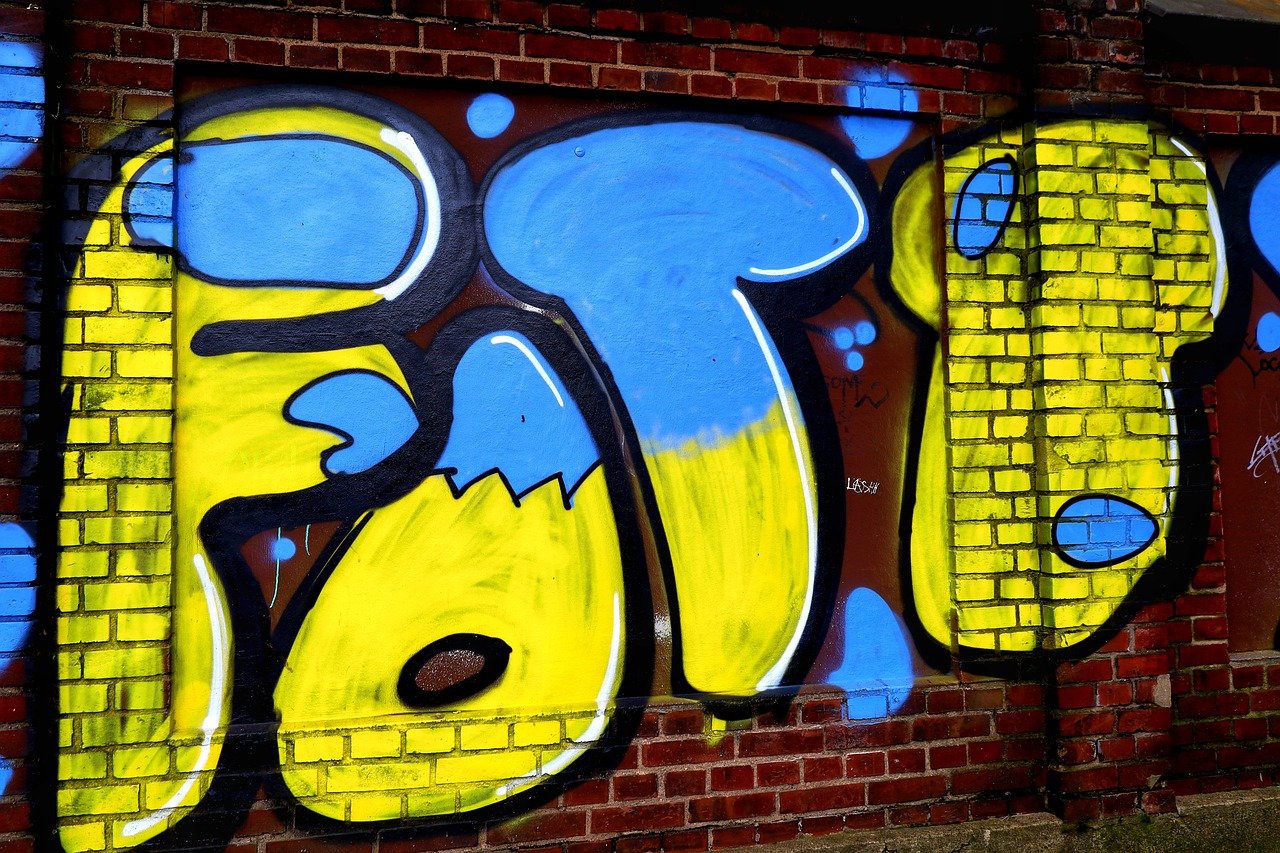
Basic Techniques for Yarn Art
When diving into the world of yarn wall art, mastering some basic techniques is essential for crafting stunning pieces that can transform your living space. These foundational skills not only enhance your creativity but also provide the tools you need to explore more complex designs. Whether you’re a beginner or looking to refine your skills, understanding the core methods of knotting, weaving, and wrapping will set you on the right path.
First up is knotting, a technique that can significantly add texture and depth to your art. Think of knotting as the building blocks of your yarn creations; each knot can be a unique touch that defines your piece. There are numerous knot styles you can experiment with, such as the simple square knot, the intricate lark's head knot, or even the elegant double knot. Each of these knots serves a different purpose and can be used in various ways to create stunning visual effects. For example, using a combination of knots can give your wall art a three-dimensional feel, making it pop off the wall in a way that flat designs simply can’t.
Next, let’s talk about weaving. This technique opens up a world of intricate designs and patterns that can elevate your wall art to a whole new level. Weaving involves interlacing yarn strands to create beautiful textures and shapes. You can use a simple loom or even your hands to weave, depending on the complexity of your design. By varying the tension and spacing of your yarn, you can create everything from tight, structured patterns to loose, flowing designs that mimic the gentleness of nature. The beauty of weaving is that it allows for endless creativity; you can combine different yarn types, colors, and even materials to achieve unique effects. Consider creating a tapestry that features a gradient of colors, or a piece that tells a story through its woven elements.
Wrapping is another essential technique in yarn art that can add visual interest and a tactile quality to your projects. This method involves wrapping yarn around a base material—like a wooden hoop or a canvas—to create a layered effect. It’s like dressing up a plain canvas with a vibrant yarn coat! Wrapping can be done in various patterns, such as spirals or stripes, and can be combined with other techniques for more complexity. For instance, you could wrap a wooden dowel with colorful yarn and then hang it vertically to create a stunning wall hanging that draws the eye. The interplay of colors and textures can transform even the simplest shapes into something extraordinary.
As you explore these basic techniques, remember that the key to successful yarn art lies in experimentation. Don’t be afraid to mix and match these methods, and let your imagination run wild. Each project is an opportunity to learn and grow, so embrace the process and enjoy the journey of creating something uniquely yours!
- What type of yarn is best for beginners? For beginners, it's advisable to start with acrylic yarn as it is affordable, easy to work with, and comes in a wide variety of colors.
- Can I use other materials besides yarn? Absolutely! You can incorporate materials like fabric scraps, twine, or even beads to add more texture and interest to your wall art.
- How do I hang my yarn art? You can hang your yarn art using nails, hooks, or even adhesive strips, depending on the weight of your piece and the surface of your wall.

Knotting Techniques
Knotting is more than just a simple way to tie two pieces of yarn together; it's a dynamic technique that can transform your wall art into a textured masterpiece. When you dive into the world of knotting, you'll discover a range of styles, each offering its own unique flair and depth to your creations. Have you ever thought about how a few simple knots can completely change the look and feel of a piece? It’s almost like magic!
One of the most popular knotting techniques is the square knot, which is often used for its simplicity and versatility. This knot is perfect for beginners, as it’s easy to learn and can be used in various projects. To create a square knot, simply take one end of the yarn and cross it over the other, then pull it through the loop you’ve created. Repeat this process in the opposite direction, and voilà! You have a secure knot that can add a lovely texture to your wall art.
Another fascinating knotting technique is the macramé knot. This technique involves a series of knots that are tied in a specific pattern, creating intricate designs. Macramé can be used to form beautiful fringes or even entire wall hangings that showcase your creativity. Imagine how stunning a macramé wall piece would look in your living room, with its elegant patterns cascading down like a waterfall of yarn! For those who enjoy a bit of a challenge, macramé is a fantastic way to hone your skills and create something truly unique.
If you’re looking to add some flair, consider experimenting with the lark's head knot. This knot is often used to attach yarn to a base, making it an essential technique for any yarn artist. To tie a lark's head knot, fold your yarn in half, place the loop behind your base, and pull the ends through the loop. This knot creates a stunning visual effect, especially when used in clusters, and can be a game-changer for your wall art.
For those who want to explore even further, the half-hitch knot offers a more complex yet rewarding option. This knot allows you to create patterns and shapes that can elevate your artwork to new heights. The half-hitch can be used alone or in combination with other knots to create layered textures that draw the eye. Just imagine how a series of half-hitch knots could add depth and interest to a piece inspired by the waves of the ocean!
As you experiment with these various knotting techniques, remember that practice makes perfect. Don't be afraid to mix and match different styles. The beauty of yarn art lies in its personalization; your wall art should reflect your unique style and personality. Dive into the world of knotting, and let your imagination run wild!
- What type of yarn is best for knotting? Generally, medium-weight yarns such as cotton or acrylic are great for knotting because they hold their shape well and are easy to work with.
- Can I use any type of knot for my wall art? While you can use many types of knots, some work better for specific designs. Experiment to find which knots suit your style best!
- How do I secure my knots? Make sure to pull your knots tightly and evenly to ensure they stay secure. You can also use a bit of fabric glue for extra hold if needed.

Weaving Patterns
Weaving is not just a technique; it’s a form of storytelling through yarn. When you delve into the world of weaving patterns, you open up a treasure trove of possibilities. Imagine transforming simple strands of yarn into intricate designs that speak to your personal style and creativity. Whether you’re a novice or a seasoned crafter, mastering some basic weaving techniques can elevate your yarn wall art from ordinary to extraordinary.
One of the first things to consider when weaving is the type of loom you want to use. A simple frame loom is perfect for beginners, allowing you to experiment with various patterns without overwhelming yourself. As you gain confidence, you might want to explore more complex looms, such as rigid heddle or tapestry looms, which can create stunning textures and depth in your work.
When it comes to patterns, the sky is the limit! You can opt for classic designs like stripes or chevrons, or venture into more elaborate motifs like mandalas or floral arrangements. The choice of colors plays a critical role in the overall aesthetic of your piece. For instance, using a monochromatic palette can give a sophisticated look, while a vibrant mix can create a playful and energetic vibe.
Here are a few popular weaving patterns you might want to try:
- Plain Weave: This is the most basic technique, where the yarn is woven over and under in a simple alternating pattern. It’s a great starting point for beginners.
- Twill Weave: This method creates a diagonal pattern, adding depth and texture to your wall art. It’s slightly more complex but yields beautiful results.
- Basket Weave: This pattern resembles the interlacing of a basket, offering a unique visual appeal. It’s perfect for creating thicker, more textured pieces.
To help you visualize these techniques, here’s a simple comparison table of weaving patterns:
| Pattern Type | Complexity Level | Visual Effect |
|---|---|---|
| Plain Weave | Easy | Flat and uniform |
| Twill Weave | Intermediate | Diagonal lines and texture |
| Basket Weave | Intermediate | Thick and textured |
As you weave, remember that practice makes perfect. Don’t be afraid to experiment with different yarns and colors. Each piece you create is a reflection of your journey and a testament to your creativity. So grab your loom, choose your yarn, and let the magic of weaving patterns transform your wall art into a stunning focal point in your home.
Q: What type of yarn is best for weaving?
A: The best type of yarn for weaving depends on your project. Cotton is great for beginners due to its durability, while wool offers warmth and texture. Acrylic can also be a good choice for vibrant colors and ease of care.
Q: Do I need a loom to create woven wall art?
A: While a loom can make the process easier and more structured, you can also weave without one. Techniques like finger weaving or using a cardboard loom can yield beautiful results.
Q: How can I incorporate different colors into my weaving?
A: To incorporate different colors, consider using a technique called color blocking, where you weave sections of different colors next to each other. You can also experiment with ombre effects by gradually changing shades.

Creative Design Ideas
Unleashing your creativity is one of the most exciting parts of turning yarn into wall art. The beauty of DIY decor lies in its endless possibilities, allowing you to craft pieces that are not only visually stunning but also deeply personal. Imagine walking into a room and being greeted by a vibrant tapestry that reflects your unique style and personality. Whether you lean towards the modern aesthetic or prefer a more rustic charm, there are countless design ideas to inspire your next project.
One popular trend in yarn wall art is the use of geometric shapes. These designs are not only visually striking but also lend a contemporary flair to your space. Picture a series of triangles and hexagons interwoven with various shades of yarn, creating a dynamic piece that draws the eye and sparks conversation. To achieve this, you can experiment with different yarn thicknesses and colors, layering them to create depth and interest. The simplicity of geometric patterns combined with the texture of yarn can transform any wall into a captivating focal point.
On the other hand, if you find solace in the beauty of nature, consider incorporating nature-inspired themes into your yarn art. This approach brings a sense of tranquility and warmth to your home. You could create a stunning landscape scene using different shades of green and blue yarn to depict mountains, rivers, or fields. Floral motifs are another excellent way to embrace nature; imagine crafting a bouquet of colorful yarn flowers that seem to bloom right off the wall. These designs can evoke feelings of peace and serenity, making them perfect for spaces like bedrooms or meditation areas.
As you brainstorm your design, don’t forget to play with textures. Mixing various yarn types can add a tactile dimension to your art. For instance, combining soft cotton yarn with the roughness of wool can create a beautiful contrast that enhances the overall aesthetic. You might also consider adding embellishments like beads or feathers to your yarn art, which can introduce an unexpected element and elevate your piece to new heights.
To help you visualize your ideas, here’s a quick table summarizing some creative design themes you might consider:
| Design Theme | Description | Color Palette Suggestions |
|---|---|---|
| Geometric Shapes | Modern patterns using triangles, circles, and lines. | Bold colors like teal, mustard, and charcoal. |
| Nature-Inspired | Floral motifs and landscape scenes. | Earthy tones like greens, browns, and soft pastels. |
| Textured Layers | Combining different yarn types for depth. | Monochromatic schemes with varied yarn textures. |
Finally, don’t hesitate to let your imagination run wild! The beauty of creating yarn wall art is that there are no strict rules. You can mix and match techniques, colors, and themes to develop something truly unique. Whether you’re crafting a large statement piece or a small accent, remember that the process is just as important as the final product. So grab your yarn, unleash your creativity, and start turning your visions into reality!
Q: What type of yarn is best for wall art?
A: The best type of yarn depends on your desired texture and aesthetic. Cotton yarn is great for a smooth finish, while wool offers warmth and depth. Acrylic yarn is versatile and comes in a wide range of colors.
Q: How do I hang my yarn wall art?
A: You can use adhesive hooks, nails, or even a wooden dowel to hang your yarn creations. Just ensure that whatever you choose can support the weight of your piece.
Q: Can I wash my yarn wall art?
A: It's best to avoid washing yarn wall art, as it may lose its shape or texture. Instead, consider spot cleaning with a damp cloth if needed.
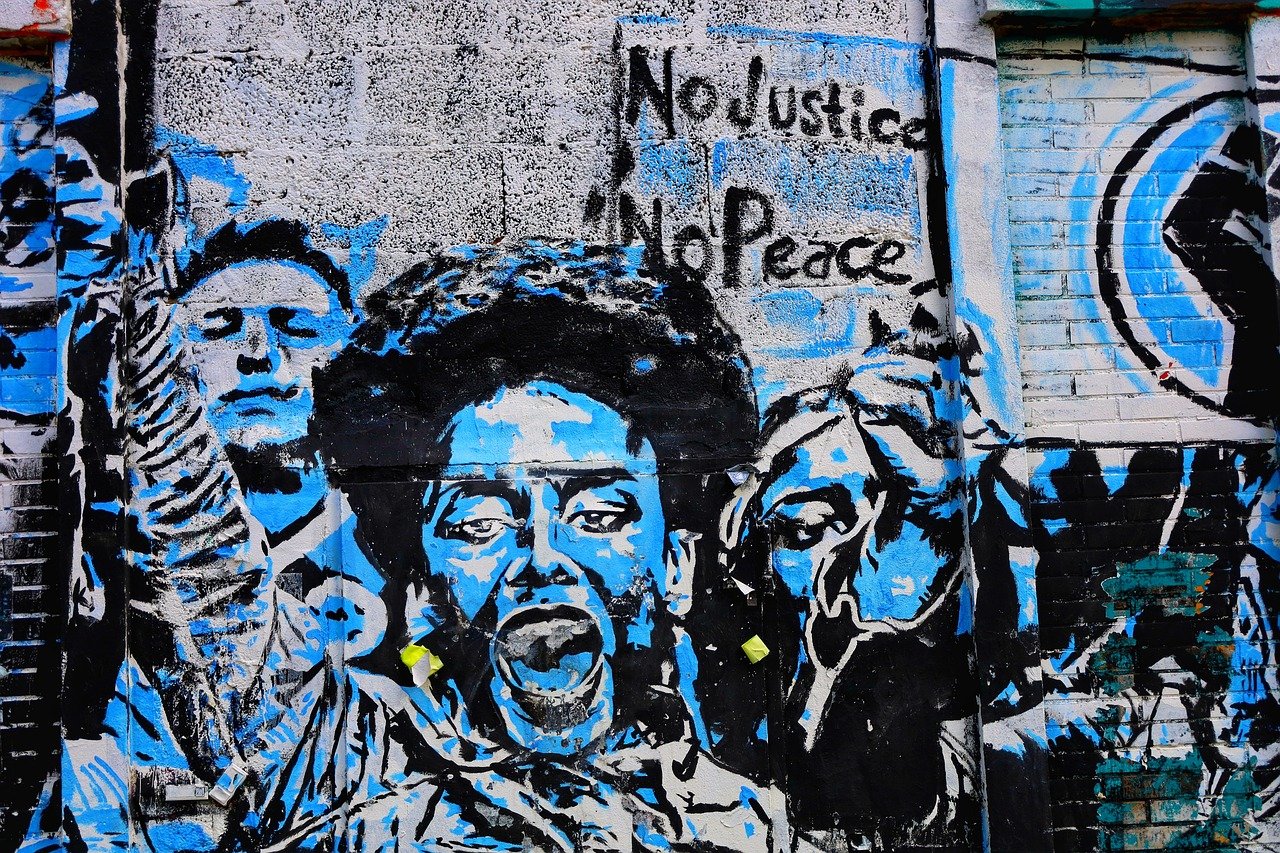
Geometric Shapes
Geometric shapes are not just mathematical concepts; they are a vibrant and exciting way to express creativity in your yarn wall art! Imagine stepping into a room adorned with stunning triangular patterns or mesmerizing hexagons crafted from colorful yarn. These designs can transform a bland wall into a captivating focal point, making your space feel modern and chic. The beauty of geometric shapes lies in their simplicity and versatility, allowing you to mix and match different forms to create a unique masterpiece that reflects your personal style.
When working with geometric shapes, it’s essential to consider the overall composition of your piece. Think about how different shapes can interact with one another. For instance, you can create a harmonious blend by combining circles with squares or triangles with rectangles. This interplay of shapes can add depth and interest to your artwork. To get you started, here are some popular geometric shapes you might want to experiment with:
- Triangles: These can be arranged in various orientations to create dynamic patterns.
- Squares: Perfect for creating grids or checkerboard designs.
- Hexagons: These shapes can bring a honeycomb effect to your wall art.
- Circles: Use them to soften the edges of more angular shapes, adding balance to your work.
One of the most exciting aspects of geometric yarn art is the potential for layering. You can start with a base shape, such as a large triangle, and then add smaller shapes on top, creating a three-dimensional effect. This layering technique not only enhances the visual appeal but also adds texture to your piece. Consider using varying yarn thicknesses and colors to emphasize different layers, making your geometric designs pop!
To kickstart your geometric yarn wall art journey, here are a few tips:
- Plan Your Design: Sketch out your ideas on paper before you start. This will give you a clear vision of what you want to achieve.
- Choose Your Colors Wisely: Use a color palette that resonates with your space. Complementary colors can create striking contrasts, while analogous colors can provide a more harmonious look.
- Experiment with Scale: Don’t be afraid to play with the size of your shapes. Larger shapes can serve as the focal point, while smaller ones can add intricate details.
With geometric shapes, the only limit is your imagination! Whether you prefer bold, vibrant colors or soft, muted tones, you can create a stunning piece that not only beautifies your wall but also showcases your artistic flair. So grab your yarn and let those geometric shapes take flight!
Q: What type of yarn is best for geometric wall art?
A: While any yarn can work, cotton yarn is often preferred for its durability and ease of handling. However, feel free to experiment with different types like wool or acrylic for varied textures.
Q: How do I hang my yarn wall art?
A: You can use adhesive hooks, nails, or even a decorative dowel rod. Just ensure that whatever method you choose is sturdy enough to hold your artwork securely.
Q: Can I mix different yarn types in one piece?
A: Absolutely! Mixing yarn types can add depth and interest to your design. Just keep in mind the weight and texture differences when planning your project.
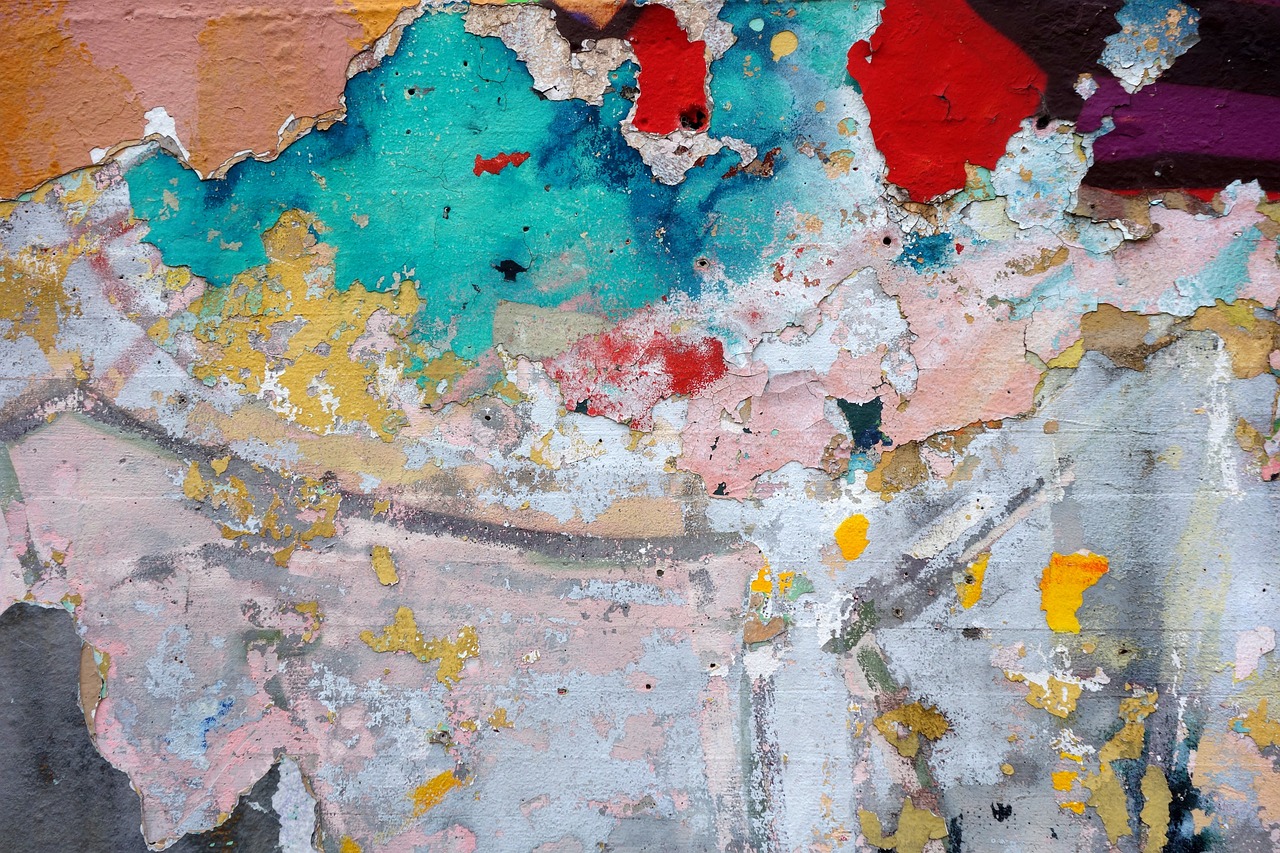
Nature-Inspired Themes
When it comes to decorating our living spaces, there's something inherently calming about . These designs not only bring the beauty of the outdoors inside but also create a serene atmosphere that can help alleviate stress. Imagine walking into a room adorned with yarn wall art that mimics the gentle curves of a rolling hillside or the delicate petals of a flower. The beauty of using yarn for such projects lies in its versatility, allowing you to create stunning pieces that resonate with the natural world.
To truly capture the essence of nature, consider incorporating organic shapes and earthy color palettes into your yarn wall art. Think about the colors you see in a lush forest: deep greens, soft browns, and vibrant floral hues. You can achieve this by selecting yarns that reflect these tones, creating a harmonious balance that draws the eye and soothes the mind. For instance, using shades of green and brown can evoke the feeling of being surrounded by trees, while pops of floral colors can add a cheerful, lively touch.
One exciting way to bring nature into your yarn art is by creating floral motifs. By using various knotting and weaving techniques, you can craft beautiful flowers that bloom on your walls. This could involve using a simple knotting technique to form petals and then layering them to create depth. Alternatively, you might choose to weave a tapestry that represents a whole garden, complete with leaves and stems, giving the illusion of a vibrant landscape.
Another captivating idea is to create a landscape scene using yarn. Imagine a sunset over a mountain range, where you can use different shades of yarn to depict the sky, mountains, and even a flowing river. By layering the yarn in various techniques—such as wrapping, knotting, and weaving—you can create a dynamic piece that captures the beauty of a natural vista. This not only serves as a stunning focal point in any room but also tells a story, inviting viewers to imagine themselves in that serene setting.
For those who prefer a more minimalist approach, consider creating abstract representations of nature. This could involve using simple lines and shapes to suggest elements like waves, clouds, or even the contours of a hill. The beauty of abstract art is that it allows for personal interpretation; what might look like a wave to one person could be a mountain to another. This flexibility makes it an excellent option for those who want to express their connection to nature without being overly literal.
In summary, nature-inspired yarn wall art is a fantastic way to personalize your space while bringing the calming influence of the outdoors inside. Whether you opt for floral designs, landscapes, or abstract forms, the key is to let your creativity flow and allow your love for nature to shine through your work. Now, let’s dive into some common questions that might arise when embarking on this creative journey.
- What type of yarn is best for nature-inspired themes? Natural fibers like cotton or wool are excellent choices as they often come in earthy tones and have a soft texture that complements organic designs.
- How can I ensure my yarn art is durable? Consider using a sturdy backing material, such as canvas or wood, to provide support for your yarn creations. Additionally, securing the yarn tightly and using quality adhesives can enhance durability.
- Can I incorporate other materials with yarn? Absolutely! Adding elements like twigs, leaves, or even fabric can enhance your nature-inspired designs and add texture and depth to your artwork.
Frequently Asked Questions
- What type of yarn should I use for wall art?
Choosing the right yarn is essential for your project. Cotton yarn is great for durability and texture, while wool offers warmth and richness. Acrylic yarn is budget-friendly and comes in a wide range of colors. Think about the look you want to achieve and select accordingly!
- How do I choose color combinations for my yarn art?
Color theory is your best friend here! Consider complementary colors that create contrast or analogous colors for a more harmonious look. Experiment with different shades and tones to see what resonates with your personal style and the vibe of your space.
- What tools do I need for making yarn wall art?
You'll need a few basic tools: scissors, a yarn needle, and a sturdy base like a wooden frame or canvas. Depending on your chosen techniques, you might also want to have a glue gun or tape handy to secure your yarn in place. Being prepared makes all the difference!
- Can I use recycled materials for my yarn art?
Absolutely! Using recycled materials not only helps the environment but also adds a unique touch to your creations. Old fabric, cardboard, or even repurposed frames can serve as excellent bases for your yarn art. Get creative and let your imagination run wild!
- What are some basic techniques I should learn?
Start with knotting, weaving, and wrapping. Knotting can create texture, while weaving allows for intricate patterns. Wrapping yarn around objects can add depth and dimension to your art. Master these techniques, and you'll have a solid foundation to build upon!
- How do I create geometric shapes in my yarn art?
Geometric shapes are all about precision and planning! Use a ruler to sketch your design on your base. Then, use yarn to outline and fill in the shapes. Don’t be afraid to mix colors and patterns to create a stunning visual impact!
- Can I incorporate natural themes into my yarn art?
Definitely! Nature-inspired themes can bring a calming effect to your space. Think about using floral motifs, landscapes, or even animal shapes. You can achieve this by using different yarn textures and colors that mimic the natural elements.



















